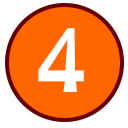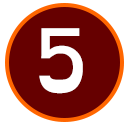Here are some tips you can use as you design the navigation for your web essay. Since it’s a multipage essay, you need to make sure that your readers get from one page to the next. You can consider all of these options, and make up something of your own. Think about how you want readers to move through your document and make things as easy and clear as you can.
General Details
- You can use different names for your pages. Those used here (e.g., Overview, Design) are not the only choices.
- None of the links work on this page. Pretend that all the links go to different pages of a web essay.
- You are not limited to just one navigation system. You can use both whatever menu option your theme allows and some links at the bottom of each page in your essay.
Menu Navigation Option:
Go to Appearance –> Menus, and add subpages wherever you want the web essay to appear in your menus..
Linear Navigation Option:
Add links to the previous and next pages at the bottom of your page. You can play with the options here to make the links look the way you want to. You can just center the two links and add a dash or something in the middle to separate the two:
Previous: Overview — Next: Design
If you know HTML, you can try adding a table to make the previous link left aligned and the next link right aligned.
| Previous: Overview | Next: Design |
If you know CSS, you can try using DIVs to align the links to the left and right, but note that your theme may not work smoothly with the added code.
Table of Contents Navigation Option:
Add links to all the pages of your web essay at the bottom of the page. Usually you remove the link for the page you are on. Some sites will make the link bold as well. I inserted a symbol between the pages.
For the example below, imagine you are on the Overview page, so that word isn’t linked and is in boldface:
Overview ⇔ Rhetorical Situation ⇔ Design ⇔ Affordances ⇔ Constraints ⇔ Conclusion
When I moved to the Rhetorical Situation page, the navigation at the bottom would change to this version. Overview is now a link, and Rhetorical Situation isn’t linked and is in boldface:
Overview ⇔ Rhetorical Situation ⇔ Design ⇔ Affordances ⇔ Constraints ⇔ Conclusion

 write and design web content, use digital images (and if appropriate, video and audio), and recognize basic HTML and CSS syntax.
write and design web content, use digital images (and if appropriate, video and audio), and recognize basic HTML and CSS syntax.









